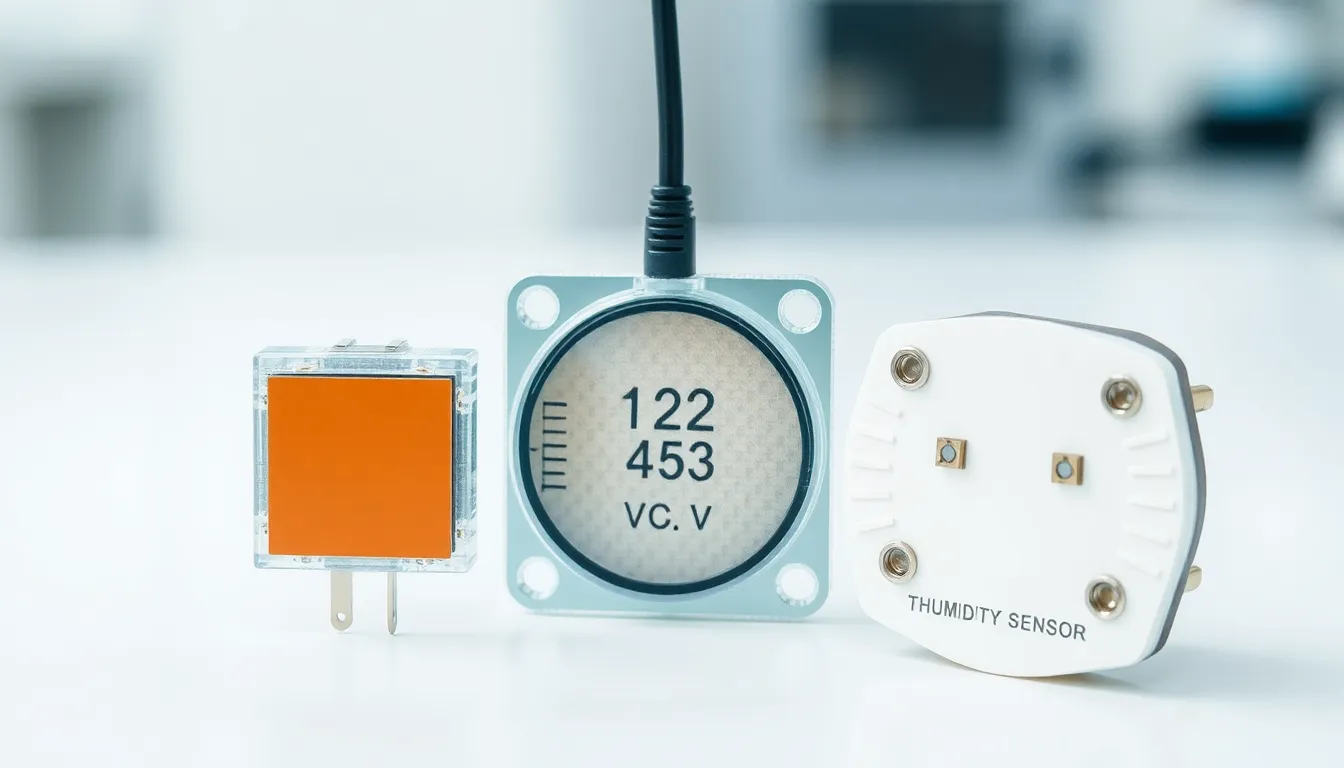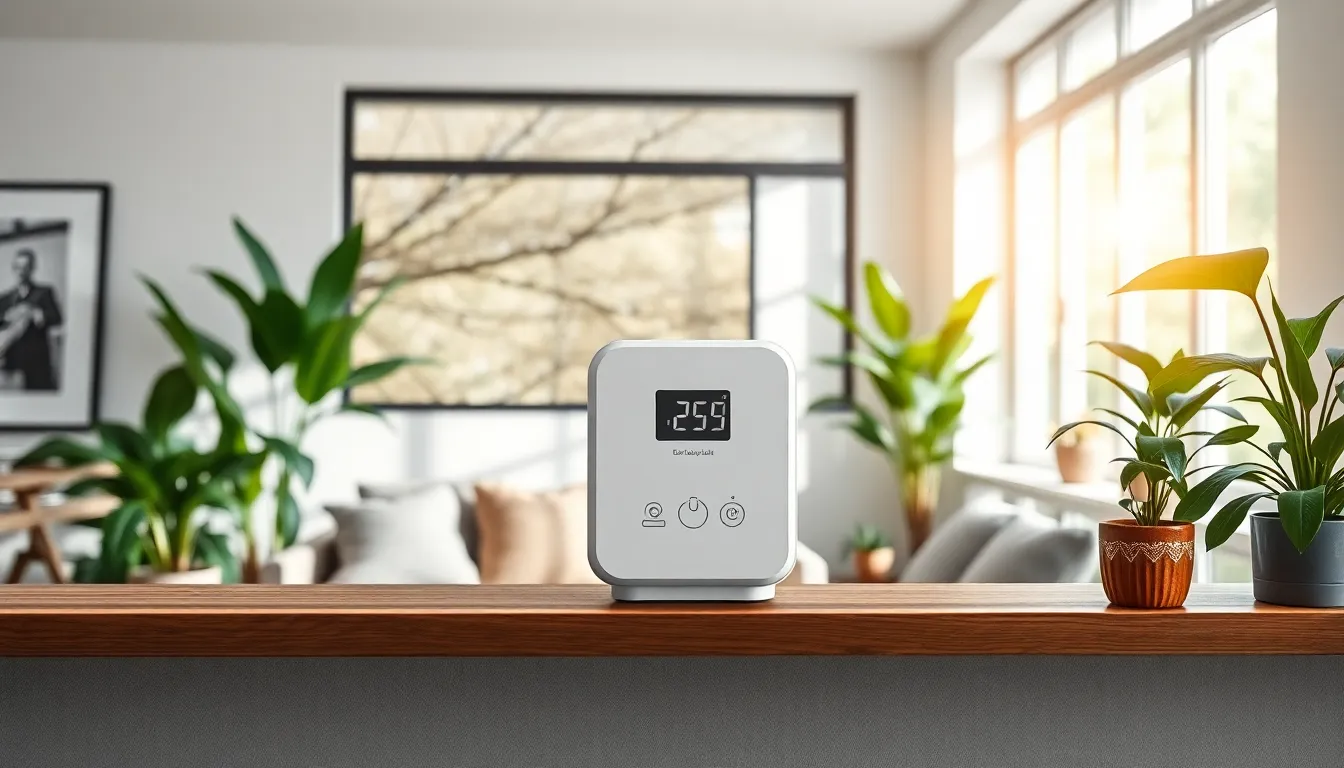In a world where humidity can turn a cozy room into a swamp, IoT humidity sensors swoop in like superheroes to save the day. These nifty gadgets monitor moisture levels with precision, ensuring that homes and businesses stay comfortable and mold-free. Who knew that keeping track of humidity could be this high-tech and, dare we say, fun?
Table of Contents
ToggleOverview of IoT Humidity Sensors
IoT humidity sensors monitor and regulate humidity levels in various environments. These sensors play a crucial role in maintaining optimal conditions for comfort and health.
Definition and Importance
IoT humidity sensors measure the moisture content in the air, offering real-time data for indoor and outdoor environments. These devices use advanced technology to detect humidity levels accurately. Monitoring humidity helps prevent issues such as mold growth or damage to stored goods. Effectively controlling moisture contributes to a healthier living space or workspace. Businesses and homeowners value these sensors due to their ability to enhance comfort and efficiency.
Applications in Various Industries
IoT humidity sensors find applications across multiple industries, including agriculture, manufacturing, and HVAC. In agriculture, sensors optimize irrigation by providing data on soil moisture. The manufacturing sector benefits by controlling humidity levels, ensuring product quality and safety. HVAC systems utilize humidity sensors to maintain appropriate indoor climates, improving energy efficiency. Each industry leverages these devices to enhance operations and improve overall effectiveness. As such, the versatility of IoT humidity sensors makes them vital components in diverse fields.
Types of IoT Humidity Sensors

IoT humidity sensors come in various types, each designed for specific applications and environments. Understanding these types helps in selecting the appropriate sensor for moisture measurement.
Capacitive Humidity Sensors
Capacitive humidity sensors measure relative humidity by detecting changes in capacitance. Their design consists of two conductive plates with a dielectric material in between. As humidity levels rise, the dielectric constant of the material changes, altering capacitance. These sensors are known for their accuracy and quick response times, making them popular in HVAC systems and consumer electronics.
Resistive Humidity Sensors
Resistive humidity sensors determine relative humidity based on changes in electrical resistance. Typically, they use a hygroscopic material that absorbs moisture from the air. As humidity increases, the resistance decreases, allowing for a clear measurement of moisture levels. Common applications include industrial settings and home automation systems where moisture control is essential.
Thermal Conductivity Humidity Sensors
Thermal conductivity humidity sensors work by measuring changes in thermal conductivity caused by varying humidity levels. These sensors utilize two thermistors to detect temperatures of dry and moist air. When humidity increases, it affects the heat transfer properties of the air, enabling precise readings. Such sensors are often utilized in specialized environments like laboratories and manufacturing processes where accurate humidity control is crucial.
Key Features to Consider
Choosing the right IoT humidity sensor involves understanding several key features that impact performance and application.
Accuracy and Sensitivity
Accuracy plays a vital role in effective monitoring. High-precision sensors provide reliable readings, essential for preventing moisture-related issues. Sensitivity enhances a unit’s ability to detect slight variations in humidity levels, crucial for environments such as greenhouses. Capacitive sensors are known for superior accuracy, making them ideal for HVAC systems. In contrast, resistive sensors may serve adequately in less demanding settings. Balancing accuracy and sensitivity ensures devices maintain optimal moisture levels, improving both comfort and safety.
Response Time
Response time influences how quickly a sensor reacts to changes in humidity. Fast-responding sensors offer real-time data, essential for dynamic environments like food storage or pharmaceuticals. Sensors with a response time under a few seconds allow for timely adjustments, preventing potential damage. Capacitive and thermal conductivity sensors typically have quicker response times than resistive counterparts. This capability directly impacts user experience and operational efficiency. Selecting sensors with optimal response times enhances moisture management across various applications.
Connectivity Options
Connectivity options determine a sensor’s integration within an IoT ecosystem. Devices with Wi-Fi, Bluetooth, and Zigbee capabilities enable seamless data transfer and remote monitoring. Such features facilitate access to real-time data from smartphones or computers, enhancing user interaction. Compatibility with existing smart home ecosystems or industrial control systems adds flexibility. Enhanced connectivity also supports automation, allowing for proactive adjustments based on humidity levels. Understanding connectivity preferences ensures the chosen sensor aligns with intended applications and network requirements.
Benefits of Using IoT Humidity Sensors
IoT humidity sensors offer significant advantages in various settings. These benefits enhance comfort, efficiency, and overall environmental control.
Real-Time Monitoring
Real-time monitoring stands as a primary benefit of IoT humidity sensors. They continuously track humidity levels, providing instant data crucial for making informed decisions. Users receive alerts when moisture levels exceed or drop below predetermined thresholds. The swift response helps prevent issues such as mold growth and equipment damage. Businesses in sectors like agriculture rely on this feature to optimize irrigation practices. Homeowners appreciate the ability to monitor conditions via mobile devices, ensuring comfortable living environments.
Energy Efficiency
Energy efficiency gains considerable improvement through the implementation of IoT humidity sensors. Accurate humidity readings allow HVAC systems to operate optimally. These sensors enable systems to adjust cooling and heating in response to real-time data, minimizing energy waste. As a result, businesses and homeowners experience reduced utility bills while maintaining comfort. Efficient systems also contribute to environmental sustainability efforts. Manufacturers particularly benefit by optimizing their processes according to humidity fluctuations.
Data Analytics and Insights
Data analytics and insights play a vital role in maximizing the utility of IoT humidity sensors. These sensors generate vast amounts of data, which can be analyzed for patterns and trends. Such insights assist organizations in predicting maintenance needs and enhancing operational efficiencies. Additionally, businesses can tailor their strategies based on humidity-related data trends. The ability to visualize moisture levels over time supports informed decisions, ultimately improving product quality. Industries, including food storage and pharmaceuticals, maximize quality control through these analytics.
IoT humidity sensors are transforming how moisture levels are managed across various environments. Their ability to provide real-time data and enhance energy efficiency makes them indispensable in both residential and industrial applications. By selecting the right sensor based on accuracy and connectivity, users can significantly improve comfort and operational efficiency.
The versatility of these sensors ensures they can adapt to specific needs, whether it’s for agriculture, manufacturing, or home automation. As technology advances, the integration of IoT humidity sensors will continue to play a crucial role in maintaining optimal conditions, preventing issues like mold growth, and supporting sustainable practices. Embracing these innovations not only enhances user experience but also drives efficiency in diverse sectors.

